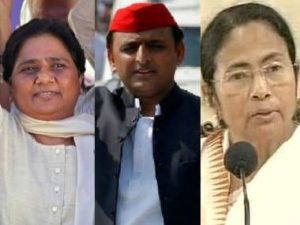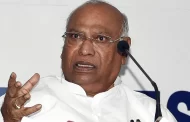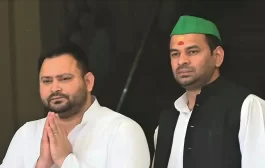The G20 Leaders’ Summit 2018 will be held at Buenos Aires in Argentina on 30 November and 1 December. This year, the focus of the G20 — the world’s 20 largest economies — will be the future of work, infrastructure for development and a sustainable food future. These were the three issues Argentina’s president Mauricio Macri said — at the launch of the Argentine Presidency of the bloc — would be the key priorities for the G20 meetings for the year, with the theme being ‘Building Consensus for Fair and Sustainable Development’.
The yearly agenda of the G20 includes over 50 meetings of representatives, which culminates at the Leaders’ Summit. At the end of the two-day summit in Buenos Aires, a joint declaration will be issued based on the policy recommendations made at the G20 meetings held over the year.
Prime Minister Narendra Modi left for Buenos Aires on Wednesday to attend the 10th anniversary of the G20, which will also see the participation of US president Donald Trump, Japanese prime minister Shinzo Abe and Chinese president XI Jinping. At this international platform, Modi will highlight “the need for reformed multilateralism, which reflects the contemporary realities and can effectively strengthen collective action for global good”.
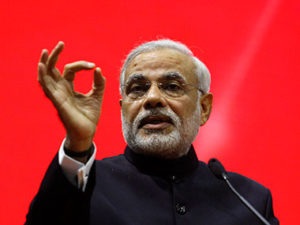
Besides the need to “enhance coordinated action against fugitive economic offenders and financing of terrorism”, Modi will highlight the risks of oil price volatility and also urge countries not located along the Tropic of Cancer and Tropic of Capricorn to join the International Solar Alliance, in addition to speaking about schemes such as the Jan Dhan Yojana, the Mudra scheme and Ayushman Bharat.
A host of economic issues will be also covered be covered at the summit, along with the challenges of climate change and the world’s healthcare issues.
The G20 agenda for 2018 holds significance for India, especially the future of work, which the Argentinian president had said looks into “unleashing human potential”. “Technology is quickening productivity at an unprecedented rate, which presents both opportunities and challenges… We must ensure that any new wave of technological advances is as inclusive as possible, and this requires considerable investment in training so that citizens have the skills they need for work and life. We need to forge the opportunities and skills that prepare our people for this transformation, starting now,” Macri said.
This holds special significance because the Opposition in India has been hounding the ruling BJP about its unfulfilled promise of creating one crore jobs annually if voted to power. The central government’s efforts to generate jobs has fallen short, even bringing India to its highest unemployment rate of five years in 2015-16, at 5 percent, according to data from the labour bureau. This rose from 4.9 percent in 2013-14, the year before the BJP came to power.
“The country has been dragged through 10 years of jobless growth by the Congress-led UPA government,” the BJP had said in its 2014 manifesto. “Under the broader economic revival, the BJP will accord high priority to job creation and opportunities for entrepreneurship.”
The ground reality is far from this claim. In August, the International Labour Organisation (ILO) predicted India’s unemployment rate in 2018 will remain at 3.5 percent, and that 77 percent of these jobs will be “vulnerable”. The ILO’s World Employment and Social Outlook – Trends 2018 notes that there has been “strong job creation” in the Information and Communication Technology sector and “a significant portion of the jobs created in the services sector over the past couple of decades have been in traditional low value-added services where informality and vulnerable forms of employment are often dominant”.
The ILO report also noted that the the share of informal employment in India has risen within almost all manufacturing industries, adding that this was partly because of rigidities in the labour market that prevented modern manufacturing from creating employment opportunities.
“On one hand, there is a growing economy (in India) with a booming, world-class information technology sector; on the other, India struggles with lower than expected job creation, and extremely limited use of technology beyond the big cities, which is where a majority of the population resides,” said a report in Forbes, also highlighting that “complex labor laws, limited quality jobs and restrictive employment protection legislation” forced job creation in India to remain low.
These directly contradict the future of work agenda of the G20 and brings to focus that India needs much better reforms and a lot more efforts to meet the country’s employment requirements. Steps such as the implementation of the Make in India scheme, too, failed to pick up pace due to the government’s failure to generate investment in manufacturing. Demonetisation surely didn’t help the job sector either.
With regard to the Argentine president’s statement saying “considerable investment” is required in training citizens to help them develop “skills they need for work and life”, it must be noted that education and syllabus in India has not kept pace with business needs, “especially those that are interlinked to soft skills, advanced technology adoption and even the flexibility to re-skill for emerging opportunities”, the Forbes report pointed out.
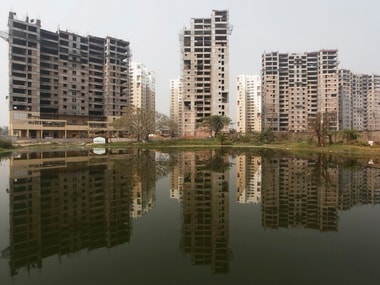
Infrastructure for development
The G20’s second priority this year is infrastructure for development. “Investment in infrastructure spurs growth and productivity. It also generates better physical and digital access that allows us to take advantage of future opportunities,” Macri announced, adding that “greater participation of the private sector” will be emphasised. “We will seek to develop infrastructure as an asset to channel today’s savings into transport, sanitation, energy and connectivity.”
According to the last Economic Survey, India will need around $4.5 trillion in the next 25 years for infrastructure development “to improve economic growth and community well being”. It noted that according to the global infrastructure outlook, the divide between the infrastructure investment required and the current trend of investment is expected to be widened over the years. This does not bode well for India in the contest of the G20 agenda.
A report by the Observer Research Foundation noted that bridging India’s infrastructure gap amid a booming population “can be the catalyst for its economic and development leap”. “In order to bridge this gap, however, an investment of $1.5 trillion over the next 10 years is needed” it noted, significantly pointing out that “it is not feasible to expect the Indian government to try and finance all of this”.
Furthermore, a Crisil report from June 2018 said India needs to spend at least Rs 50 lakh crore between FY18 and FY22 “to build its infrastructural needs”. This is a 35 percent leap from the Rs 37 lakh crore spent on infrastructure investments in the five fiscals to 2017, Forbes India noted.
This brings us to promoting private investment in infrastructure development, a proposal on the agenda of G20 2018. Crisil also emphasised that private sector involvement was a must to boost India’s infrastructure requirements, for which “the problem of stressed assets in banking and the over-leveraged balance sheets of promoters needs expeditious resolution”. It also emphasised the need to revive the public-private partnership (PPP) model to encourage private participation in infrastructure projects. However, Niti Aayog CEO Amitabh Kant believes the PPP model has “lost its vibrancy” because of the government unpreparedness and the way companies “bid aggressively for projects without sufficient due diligence”.
What India can do is simplify its legal and bureaucratic frameworks to help infrastructure development. “A big challenge that many multinational companies face in India is mining through the convoluted governance framework, intertwined between the central and state governments. This is a huge task for many global entities that belies the attractiveness of the expanded consumer market because of the policy and logistics nightmares,” Business World reported. “Coupled with a comparatively weak infrastructure, extreme climatic conditions and a huge risk of bribery and corruption, makes India a tough cookie to crack.” Which leads to the third agenda of the G20.
A sustainable food future
While announcing the goal to build a sustainable food future, Macri asserted, “Agricultural lands are the natural resource that produces most of our food, but they are limited and non-renewable. Their preservation is crucial. This is where the G20 can lay the groundwork for more public-private partnership.”
According to a report released by the Food and Agriculture Organisation (FAO) of the United Nations in 2015, India had the second-highest estimated number of undernourished people in the world, and it was estimated that over 190 million people go hungry in the country every day. “Higher economic growth has not been fully translated into higher food consumption, let alone better diets overall, suggesting that the poor and hungry may have failed to benefit much from overall growth,” the FAO report said.
Sustainable agriculture techniques enable higher resource efficiency: they help produce greater agricultural output while using lesser land, water and energy, ensuring profitability for the farmer. These essentially include methods that, among other things, protect and enhance the crops and the soil, improve water absorption and use efficient seed treatments. While Indian farmers have traditionally followed these principles, new technology now makes them more effective.
At World Food India 2017, Modi said India’s “commitment to sustainable development was at the heart of the government’s thrust for organic farming”. In 2014, after assuming office, the prime minister agreed to work with the FAO to strengthen efforts to promote India’s food security and sustainable agricultural development.
However, in implementing farming policies, the balance between producing food and preserving the ecosystem is often ignored, leaving the environment at risk, which in turn endangers the entire future of agricultural production. This, too, will have the consequence of having an impact on the jobs in the agrarian sector. Poor, unsustainable methods of farming that erode the quality of the soil, and lack of knowledge among cultivators add to this problem.
“The management policy of many agro-ecosystems has essentially been based on the premise that they are delinked from the broader landscape,” the BusinessLine reported. “Crossing ecological thresholds leads to a regime change in the ecosystem and its concomitant services. Apart from reducing the ecosystem resilience, this restricts the sustainability of food provisioning.”
“There is a need to develop less-resource intensive practices… for producing crops that have traditionally been high-resource-consuming. Moreover, policy documents need to look at water and land as an integral part of the global eco-hydrological cycle, and not as a stock of material resource to be used for the satisfaction of human requirements.”
It should be noted that India ranked last among 25 countries in the 2016 Food Sustainability Index. This was primarily because of challenges regarding nutrition and agricultural sustainability.
In a nation like India where the majority population is dependant on agriculture, where the sector contributes nearly 18 percent of the economy, this needs attention. And India has a long way to go before it can adhere to any of the recommendations that may emerge in the joint declaration with regard to building a sustainable food future.
source: Firstpost.com

